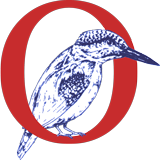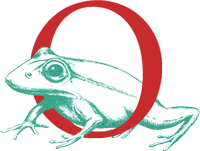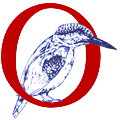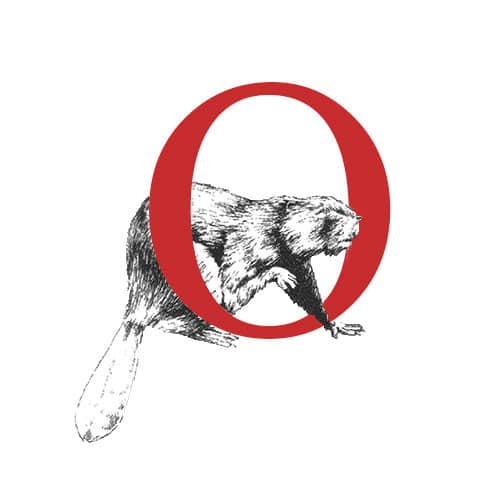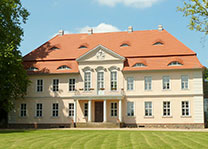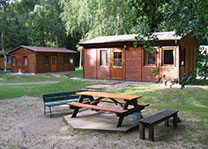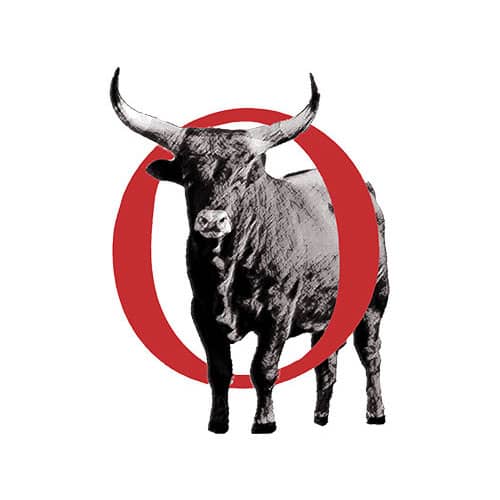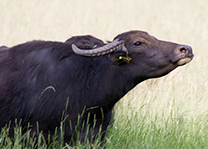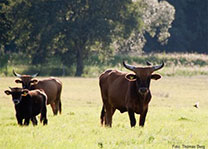The aurochs are coming back
Press release on the annual press conference of the Association of Friends of the German-Polish European National Park Unteres Odertal e. V.
on Wednesday January 13th, 2010
At the annual press conference of the Association of Friends of the German-Polish European National Park Unteres Odertal e. V. (Association) on January 13, 2010, the chairman of the association, Thomas Berg, stated, among other things:
1. “Together with the Chinese we celebrated 2009 as the year of the buffalo. As a result of our work, there are 35 water buffalos in the Friedrichsthaler Polder (5/6) in winter and in the Fiddichower Polder (10) in summer, most of them privately acquired by a Gartzer farmer. The European water buffalo is a livestock that is adapted to moist biotopes and is also fond of reeds, rushes and sedges, is hardy and, with good care, tame. We see the water buffalo as an ideal connection between agriculture and nature conservation, and the buffalo is also a tourist attraction. The water buffalo is both a farm cattle and a landscape conservationist. We strongly support the initiative of a private farmer and hope for imitators.
2. The year 2010 is now the year of the aurochs or its backcrossing, the tail cattle, because what has been exterminated will not actually come back. The backbred aurochs, quite imposing hornbears, which are a bit smaller than the original, are supposed to convert a previously rather monotonous agricultural landscape into a semi-open, varied pasture landscape in the Lunow-Stolper dry polder. The association thus combines economic and ecological aspects. The animals are easy to market, are a tourist attraction and, with a thin stocking density, enable a natural floristic and faunistic development of the landscape.
3. A full shot in the oven, however, was the preliminary briefing of the association in total reserves, announced by Mr. Treichel in the summer of 2009, especially in the so-called Gatower wetlands (approx. 80 hectares). The responsible office for land consolidation (LVLF) has made it clear that such an approach is legally untenable. Now, as can be heard from the LVLF, the head of administration is urging the association to be completely incorporated into the Fiddichower Polder (10) with a size of around 1,773 hectares. This also contradicts the spirit and the letter of the order resolution from the year 2000 for land reorganization by the same ministry. A lot of time, money and energy is wasted here. Against the resistance of the association, the company floor reorganization process will not be able to be successfully completed, because in Brandenburg too, decisions must ultimately be made according to the law. The administration’s confrontational course will lead nowhere. We are by no means happy about this, but are maintaining our compromise offer.
4. It is important, however, that despite these politically motivated but ultimately nonsensical quarrels, the good coöperation between the association and the administration on some practical questions of nature conservation could be continued, for example in the maintenance of dry lawns or the creation of hedges and trees in previously monotonous fields. This coöperation should be continued and expanded.
5. This will not rule out one or the other dispute on the matter, for example because of the traffic safety obligations: On officially designated hiking trails, the landowner must ensure that visitors are not harmed through gross negligence, for example through falling branches or trees. Therefore, dead wood standing to the right and left of the path has to be laid flat, even if this is regrettable from an ecological point of view and contradicts the idea of a total reserve. The association has therefore always insisted that no more official hiking trails than necessary through the area, especially through the total reserves. We would like to leave as much dead wood as possible in the total reserve, but we cannot accept responsibility for any damage to the national park guests. Therefore, if the administration wants to lead hiking trails through total reserves, it must take on the duty to maintain safety itself or release the landowner from liability claims. In addition, the expenses for the traffic safety obligation are not insignificant and are to be borne by the landowner in addition to the fees for the water and soil associations. It is obvious that this cannot be permanent. This will have to be debated this year.
6. Several successful projects from the last few years will be continued in 2010 as well. The National Park Yearbook Unteres Odertal has become the most important medium and forum for the specialist public interested in the International Park Unteres Odertal. It will now appear in 2010, probably in January or February. The excursion program with experts from our partner organizations, which is very well received and a wonderful sign of civic commitment, will also be continued this year. The corresponding leaflet will appear in March of this year ”.
Thomas Berg
CEO
